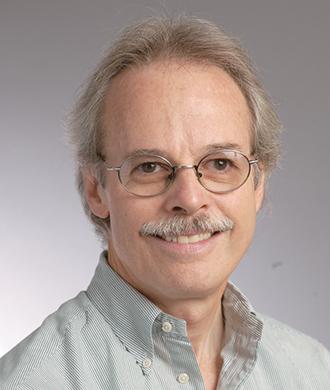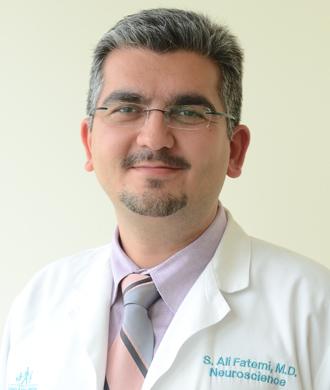Dear Friends,
With the end of the year at hand, I’d like to let you know about the research on adrenoleukodystrophy (ALD) and adrenomyeloneuropathy (AMN) at the Moser Center for Leukodystrophies at Kennedy Krieger Institute. 2019 has been another busy year, and we are excited to report some major updates:
New NIH Funding for Multicenter Network and AMN Research:
In the beginning of October 2019, we received a Notice of Award from the National Institutes of Health (NIH) stating that the NIH will provide funding for our collaborative multicenter clinical trial network proposal, a joint endeavor between our center, where I serve as site principal investigator; the Leukodystrophy Center at the Children's Hospital of Philadelphia (CHOP), with Dr. Adeline Vanderver as site principal investigator; and the Leukodystrophy Center at the Massachusetts General Hospital (MGH), with Dr. Florian Eichler as site principal investigator. This new network is called GLIA-CTN (which stands for the Global Leukodystrophy Initiative - Clinical Trials Network). We are one of the few Rare Disease Consortia funded by the NIH, and this funding will provide support to this network for the next five years. Click here to read the press release about this grant.
As part of the GLIA-CTN award, there is funding for a project to be performed at our center and at MGH, where we will be studying a total of 30 men and 30 women with AMN. We will be performing sensory-motor assessments in person during clinic visits, and also remotely, using wearable devices in the subject’s home and through a combination of accelerometers and videography. The data obtained remotely using these new techniques will be compared to in-person assessments to determine if we can reliably assess patients in their homes. If we are successful, and the Food and Drug Administration accepts this method as a valid outcome measure, it would result in dramatic changes in the way future trials in AMN will be done. Assessing patients in their homes would result in easier access to trials (especially for individuals who live far from an ALD expert center), higher recruitment rates and significant cost savings for the trial sponsors.
This project was only possible because of the generous donations we have received over the last few years that have allowed our staff—in particular, Dr. Amena Smith, Dr. Jennifer Keller and Dr. Chris Joseph—to develop these wearable device measures and get the proof of concept data needed to obtain federal funding. These investigators are outstanding and highly talented, and have dedicated their careers toward the study of outcome measures in leukodystrophies.
These studies are the most important prerequisites needed to design future trials with more advanced interventions such as gene therapy for AMN.
Biomarker Studies:
A major challenge in ALD research remains our inability to predict, for an individual who has the ALD genetic anomaly, when the disease will start and what form of ALD they will develop. While newborn screening is spreading across the United States, we still have no way to determine the age at which the newborn babies identified as having the ALD genetic anomaly will present with neurological symptoms. In addition, we do not know how fast the disease will progress once symptoms start. We are looking for markers in blood and are also utilizing imaging to see if we can identify a biomarker or imaging marker that can be predictive of disease onset or disease course.
In collaboration with Dr. Jaspreet Singh from Henry Ford Hospital in Michigan, we have obtained pilot funding from the NIH to conduct a study looking at metabolites and small RNA molecules in patient blood plasma that may predict the disease presentation and disease course. Our preliminary data suggests there are several plasma/blood markers that appear to predict whether a patient has mild or severe AMN. The results were presented recently at the Society for Neuroscience Conference in Chicago, Illinois, and at the ALD Connect Conference in Boston, Massachusetts, in November.
We now need to conduct a larger study over several years, in conjunction with the GLIA-CTN project mentioned above, to determine if these markers are truly predictive. We are still in need of additional funds to allow us to supplement the GLIA-CTN funding in order to do these studies.
Ongoing Drug Trials:
As reported last year, we started two new clinical trials in 2018: a pediatric vitamin D trial for boys with ALD whose MRI scans have not yet shown any changes to have taken place, and an adult Minoryx trial for men with AMN. Both studies are fully enrolled and currently ongoing. We hope to obtain results in 2021.
Preclinical Work on Dendrimer Nanotherapy:
Work conducted at our center in collaboration with the Center for Nanomedicine at Johns Hopkins demonstrated previously that Nanodendrimer-N-Acetylcysteine can reverse the inflammatory behavior of immune cells derived from ALD patients. As a result, this therapy is currently being pursued toward commercialization by Orpheris, Inc., and an initial human safety study was successfully performed in healthy controls. The company is hopeful to begin clinical trials in boys with cerebral ALD within the next year, pending regulatory approval.
Meanwhile, through several years of support by generous donations from the ALD community, as well as the Brian’s Hope and Run for ALD Foundations, we have been successful in studying the effect of another nanomedicine compound, Dendrimer-4-Phenylebutyrate, in ALD mice. Dr. Christina Nemeth Mertz, a neuroscientist at our center, is another outstanding young investigator who has taken the lead in these studies and has focused her career on the study of leukodsytrophies.
We are currently in the final stages of completing these studies, and the results—which were positive—were presented at the ALD Connect meeting in November 2019. We hope that Orpheris will also pursue the commercialization of this compound.
Artificial Intelligence (AI) Applications for Image Analysis in AMN:
A recent collaboration with Dr. Mathias Unberath at the Johns Hopkins Malone Center for Computer Engineering in Healthcare has allowed us to train one of our talented physician scientists, Dr. Bela Turk, to gain expertise in AI applications for automated analysis of MRIs. This is very important, in particular, for imaging the spinal cord in AMN subjects because the spinal cord moves with every breath, and thus images are very prone to artifacts, and also because manual analysis is cumbersome and unreliable. AI methods such as neural networks can learn to detect aspects within spinal cord MRIs in a way that the human eye would never be able, and this may tell us more about the nature of progression in AMN. Dr. Turk is now working with a team of engineers to develop automated AI tools that can analyze the images without human supervision. We hope that such analysis will result in the identification of an imaging marker and an AI tool that can predict disease progression.
Dr. Turk has also established a collaboration with Dr. Marc Engelen's group in the Netherlands, where we will be applying the same imaging and image analysis tools to their AMN patient cohort. Our goal is that through multinational collaboration, we can obtain larger data sets needed for automated analysis.
These efforts are currently only supported through the generous donations we have received from the ALD community and the Dresher Foundation.
Dr. Paul Watkins:

We would also like to take this opportunity to celebrate the career and achievements of Dr. Paul Watkins, a highly distinguished scientist and professor at Kennedy Krieger Institute. Dr. Watkins is a world-renowned biochemist who has spent his entire professional career studying the basic biochemistry of ALD and other peroxisomal disorders. His work, together with that of the Mosers, has resulted in many discoveries in ALD over the last several decades. Many ALD patients know him from the years he has taught us about the biochemistry of ALD at various meetings. Dr. Watkins has decided to retire but will continue to be engaged with the Moser Center as an emeritus professor. I personally consider Dr. Watkins to be an important mentor in biochemistry and am honored to have had the opportunity to work with him. Please join me in congratulating him on such a distinguished career.
None of this could have been achieved without teamwork. I am blessed to work with a fantastic team of clinicians, nurses, researchers and trainees who are dedicated to our work. At the Moser Center, we take an interdisciplinary approach, and collaborate not just within the center, but with other specialists and scientists across the world to ensure that every one of our patients receives the best possible care, and in the hope that we find a cure against ALD.
Thank you for continuing to believe in our mission. The ALD community is our family, and there is nothing that matters more to us than eradicating leukodsytrophies. We’d be honored if you would consider making a contribution to the Moser Center, and we wish you a happy holiday season and all the best for 2020.

Yours,
Ali Fatemi, MD, MBA
Director, Moser Center for Leukodystrophies
Chief Medical Officer, Kennedy Krieger Institute
P.S. To make a gift in support of the valuable research conducted by Dr. Fatemi and his research team, please click here. Gifts of all sizes are appreciated—you can make a difference!
